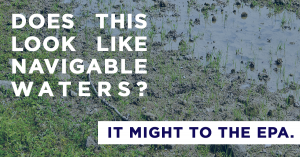Federal Agencies Seek Expansive Water Regulations
< < Go Back
The Supreme Court has twice limited the power of the federal government to regulate water, but the Environmental Protection Agency (EPA) and the Army Corps of Engineers are trying to redefine the U.S. waters that can be regulated under the Clean Water Act.
Reed Hopper and Todd Gaziano of the Pacific Legal Foundation explain: the 1972 Clean Water Act prohibits people from discharging materials, without a permit, into “navigable waters,” which are defined in the act as “waters of the United States.” Originally, the EPA and the Army Corps interpreted “waters of the United States” to mean navigable waterways that could be used for commerce, consistent with the federal power over interstate — not intrastate — commerce.
But in an attempt to extend their regulatory reach, the Army Corps has multiple times sought to regulate more isolated water bodies, but the Supreme Court struck down these attempts in 2001 and 2006. Nevertheless, in a new rule redefining “waters of the United States,” the agencies are trying to expand their reach. According to Hopper and Gaziano:
– The rule provides such an expansive definition of water that it includes ditches, drains and intermittent streams or ponds, among others.
– Any of these water bodies could be regulated if they have “significant effects” on downstream waters. The agencies are allowed to “aggregate” effects of similar features across an eco-region, which can span thousands of square miles.
– The rule extends federal jurisdiction beyond water in aquatic systems to include “associated chemical, physical and biological features” of aquatic systems as a whole.
The New York Times has reported on this issue and the consequences of the new federal rule for farmers. If the rule is finalized, farmers contend they could be forced to apply for federal permits to do something as simple as till their land near ditches or dry stream beds.
More From NCPA:




